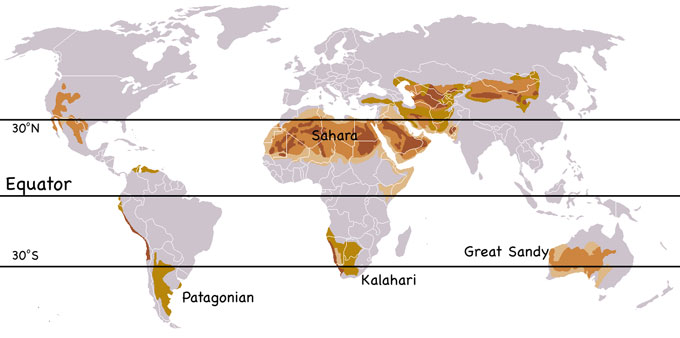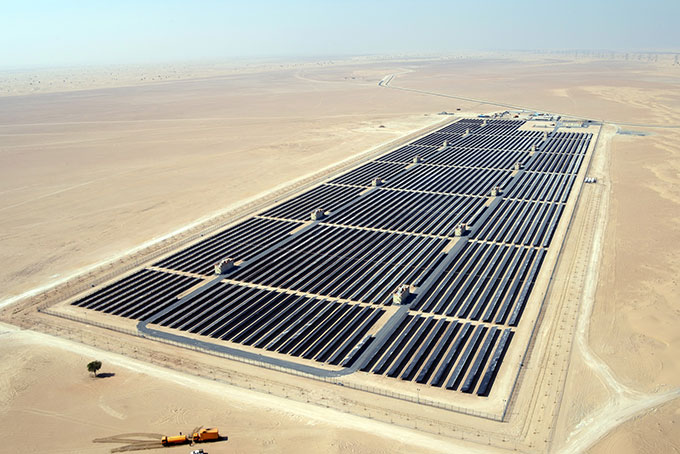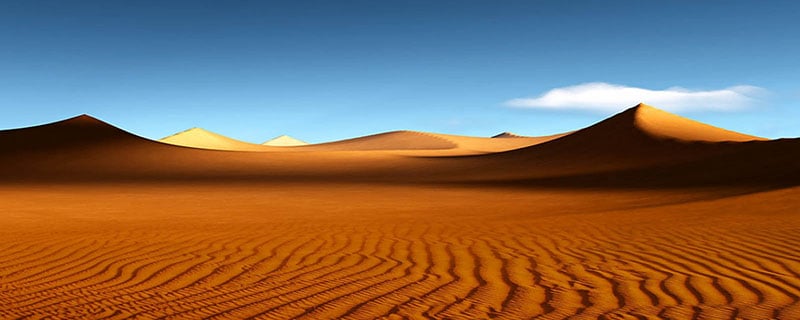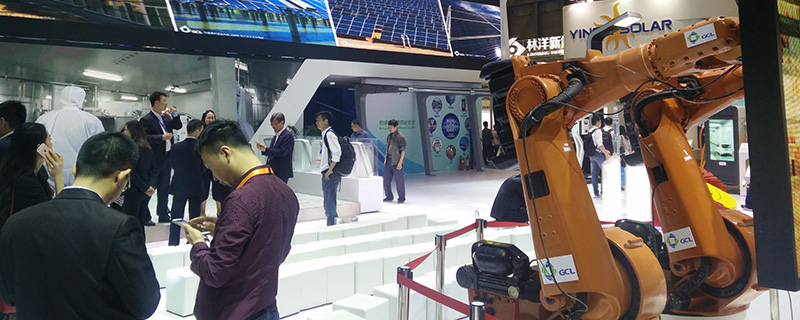Solar panels in deserts are an increasingly, literally hot topic in the PV industry. With the phenomenal emergence of new clean energy markets all over the world, our PV quality assurance specialist team at Sinovoltaics has also been increasingly involved in the quality management and inspection of solar PV projects in regions such as Latin America, Africa, and the Middle East, with many of the locations and sites in proximity to or within deserts.
Desert environments pose particularly unique climatic challenges and stress to every single component of a solar PV system, including the inverters, mounting systems, and – of course – solar PV modules.
Due to increasing involvement in desert-related PV projects and having previously lived in the Persian Gulf region and experienced the particularly challenging climatic conditions, the author found the time ripe for a series of articles addressing the complicated topic of desert and solar PV.
In this part 1 of our solar panels in deserts article series, we will examine the background, challenges, and potentials for solar PV energy in desert environments with an emphasis on the sensitivity of solar PV modules.
What are deserts?
Even though in science there are several varying definitions of deserts, a common simple definition is that they are dry regions of arid land with little or no precipitation, flora, and fauna and only a few people inhabiting it – if at all.
About 35% of the earth’s continental surface are per definition deserts, covering more than 33 million square kilometers.
Most commonly, there are three defined types of desert climates as per the Köppen climate classification table which in total defines 29 different earth climate types.

Deserts in the world
Desert climates are here defined as regions that receive (and hold) less than 250mm of rainfall per year. The three desert types belong to the so-called BW group for deserts in the Köppen table are defined as:
- hot deserts, classified as BWh, such as the Sahara desert (Northern Africa), most of the Arabian desert (Central Arabian Peninsula), or the Great Victoria Desert (Australia).
- mild (also: coastal or semiarid) deserts, classified as BWn, such as the Atacama desert on South America’s western coastline or the Southwestern tip of the Arabian Peninsula.
- cold deserts, classified as BWk, such as the Taklamakan and Gobi deserts in China and Antarctica.
The largest desert on our planet is the cold desert Antarctica, spanning over 14 million sqkm2, while the largest hot desert is the 9 million sqkm2 Sahara Desert, stretching from the Northwest to the Northeast coast of Africa.
Potential of solar panels in deserts
Our planet is witnessing the increasing challenge of desertification, triggered by climate change, human modernization and lifestyle changes, and – to a much lesser degree – purely natural processes.
Desertification leaves less genuinely usable space for agriculture and living for most of mankind. Due to this development, thinking about efficient ways to use otherwise mostly deserted space comes into mind – one of which is the installation of solar PV power plants in deserts.
At a first glance, deserts and photovoltaics appear to be the hot dream couple in our industry if looking at some interesting features that deserts hold for PV installations. The top 5 are:
- vast available “empty” space in which shading is a rather limited and easily avoidable problem
- high average solar radiation that can reach more than 7.5 – 8 kWh/m2 in some places like Alice Springs, Australia
- at a first glance, PV plant constructions in deserts have only a limited impact on (scarce) desert flora and fauna
- many countries with weak or unstable power supply infrastructure have or are regionally close to deserts
- moreover, deserts are largely covering countries with high energy per capita use, that is consumption of thermal power by burning fossil fuels. Solar is in this regard a more than interesting and green alternative
So, looking at the above factors which literally invite massive investment in solar PV projects in our world’s deserts, why don’t we already see large sections of our world’s deserts covered by PV power plants?
Well, actually there have already been quite some sizeable projects installed in recent years and more are currently being built or under planning. However, photovoltaic projects and thus installation, operation, and maintenance of solar panels in deserts aren’t as easy and promising as it seems at the first glance…

Solar panels in deserts: the Mohammed bin Rashid Al Maktoum Solar Park in Seih Al Dahal in Dubai (Photo by Firstsolar)
Solar panels in deserts: problems and challenges
Notwithstanding the enormous promises deserts may hold for solar PV, their general potential is on the other hand limited by quite significant constraints and problems. Let’s have a look at the top 10 challenges:
- Extreme temperatures: given the harsh climatic conditions in BWh and BWn deserts, the already very heat-sensitive solar cells are subject to enormous climatic stress that may likely trigger significant performance degradation, especially for those installed in hot deserts.
- Resource-intense operations: to minimize the impacts of heat, the sensitive components, of the solar PV plant – from the inverters to the modules – require good and stable cooling which requires an additional investment of resources. Depending on the PV module technology employed in a desert solar PV project, this often involves the usage of water which however is a costly commodity in such regions and challenging to transport over vast distances.
- Costly maintenance: access to deserts is usually more challenging and involves more time and equipment, driving up the costs for plant maintenance. On-site 24/7 monitoring, cleaning maintenance, and security at the plant require local staff on-site, which is costly.
- Sand storms: sand storms are a frequent and challenging occurrence in deserts that can be even witnessed in large urban areas such as Beijing and Tehran. The combination of strong winds blowing sharp grains of sand can cause soiling of and even damage PV modules, especially the polymer components, such as the back sheet, the antireflective coating on the front glass, and cables. Moreover, sand storms leave large layers of sun-blocking sand on the module surface (soiling) that need to be cleaned, which again emphasizes the need for efficient maintenance planning.
- Geographic limitations: in order to control operations and maintenance (O&M) but also construction costs, project developers and investors would usually opt to have the PV power plants installed in accessible areas not too distant from urbanized areas instead of in the isolated midst of a large desert, thus leaving large portions of the world’s deserts unusable. This is even more true for distant deserts such as Antarctica, which is far from any larger human settlement.
- Grid connection: in conjunction with the geographic limitations mentioned, another challenge lies with the transportation of the produced power to where it is needed. As per current technological progress, the more distant a PV power plant is located from the place it shall supply power to, the larger grid cable network s required that must also be of high quality in order to keep down losses of the power transported over the distance.
- Specific effects on flora and fauna: even though deserts are largely perceived as empty spaces in which nearly nothing grows nor lives, still many of the world’s deserts are home to plants, birds, and mammals that have mastered to cope with the harsh conditions and keep the threats of drought in check. Many plant species are characterized by a limited life cycle yet a high speed of reproduction, whereas animals reduce their activity during the days and become active at night while resting in shady places or holes over the day. The construction of PV plants in deserts – if improperly carried out – may lead to the destruction of these limited refuges. There have also been reported cases of birds being burnt to death midair when flying through the enormously hot and invisible concentrated sunlight areas over the heliostats of CSP power plants.
- Complicated terrestrial conditions: deserts are of course not only made of ice or sand dunes only but can as well be composed of arid, rocky land – all possible types that have specific requirements on the safe and proper mounting of the array.
- Dangerous and costly construction work: construction of PV power plants in deserts is more challenging than on an open green spot in Europe. Not only must the material be transported into areas that become more and more inaccessible the more distant they are from a city, but also construction works must work under harsh conditions that can pose serious medical risks.
- Political instability: many of the world’s large deserts that are close to sizeable urban areas are in unstable regions prone to political unrest, threats of terrorism, and even war, which carry a huge risk premium on the overall project investment.





Stephen A. Verchinski
on 02 Apr 2019Jeff Chenault
on 28 Mar 2018ali
on 06 Nov 2016Stefan S.
on 17 Aug 2016Niclas
on 19 Aug 2016Richard P.
on 08 Mar 2016